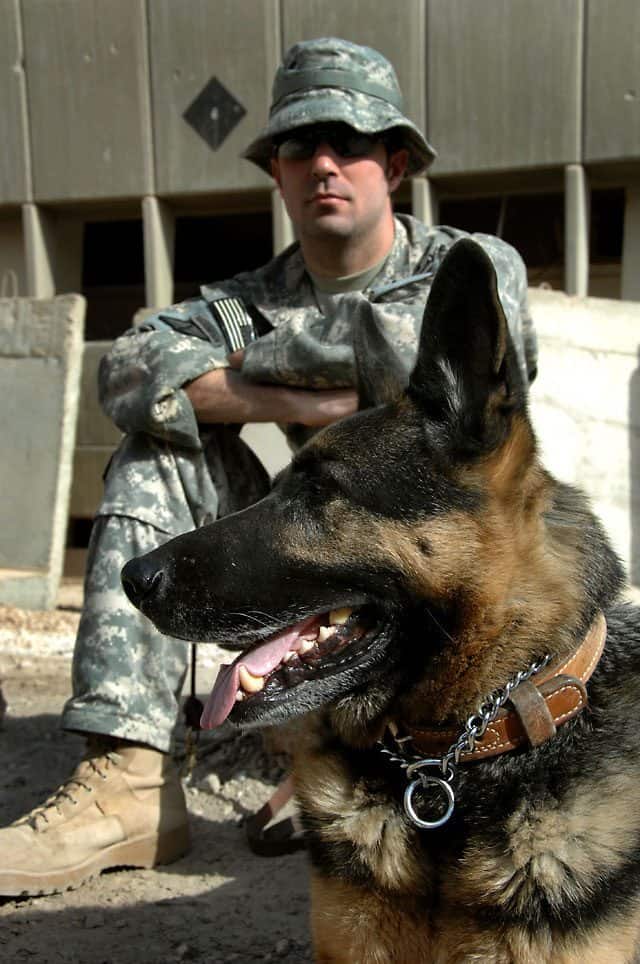
U.S. troops in Afghanistan are relying more and more on the noses of military working dogs to sniff out deadly improvised explosive devices (IEDs). These highly trained dogs landed in the spotlight recently when it was learned that Cairo, a Belgian Malinois, was part of the team that raided Osama bin Laden’s compound in Pakistan.
These dogs have proven to be so valuable that two new programs — one in the Army and the other in the Marine Corps — will be funded for the next two years to put more dogs on the front lines alongside the troops who patrol Afghanistan’s treacherous hills and valleys.
About 725 military working dog teams are currently deployed in the United States Central Command (CENTCOM) area of operations, said Richard A. Vargus, chief of the law enforcement branch at CENTCOM. Most of the 725 teams are in Afghanistan.
To boost troops’ capabilities in Afghanistan, the Department of Defense is funding the Tactical Explosive Detector Dog, or TEDD program in the Army and the IED Detector Dog, or IDD program in the Marine Corps. Under these programs, infantrymen from deploying units are selected to undergo a minimal training cycle to learn how to handle a military working dog.
The goal of both programs will be to put more dogs out on patrol and potentially save more troops’ lives, Vargus said.
“In the military working dog program, the canine is expendable; that’s why it’s there,” he said.
But the increasing reliance on the abilities of these highly trained dogs also means some dogs will be killed or wounded in the line of duty.
Since 2002, under 30 military working dogs have been killed in action. Many in the Armed Forces believe that the death count in Iraq and Afghanistan, which is at about 7500, would be double that or more without the help of bomb sniffing dogs. That’s a possible 10,000 families that didn’t have to lose a loved one.
In addition, incidents of canine post-traumatic stress disorder are on the rise, Vargus said. To get a better handle on it, the Army continues to work with dog teams stationed around the world to gather data and conduct more research.
If a dog does exhibit canine PTSD symptoms, 90 percent of the time they’ll undergo a re-acclimation period to see if they can be retrained and returned to duty.
Despite these canine health issues however, Vargus says he expects an indefinite need for strong military working dog teams.
“We’ll always have a requirement to have canine assets to counter IEDs because IEDs are here to stay,” he said. “We need a solid, stood-up force to support the war fighter.


Very interesting info ! thanks for sharing!
it’s very helpful info here! )
I hope these good dog return home safe. God Bless!